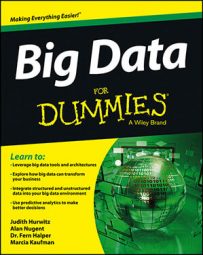The fundamental elements of the big data platform manage data in new ways as compared to the traditional relational database. This is because of the need to have the scalability and high performance required to manage both structured and unstructured data.
Components of the big data ecosystem ranging from Hadoop to NoSQL DB, MongoDB, Cassandra, and HBase all have their own approach for extracting and loading data. As a result, your teams may need to develop new skills to manage the integration process across these platforms. However, many of your company’s data management best practices will become even more important as you move into the world of big data.
While big data introduces a new level of integration complexity, the basic fundamental principles still apply. Your business objective needs to be focused on delivering quality and trusted data to the organization at the right time and in the right context.
To ensure this trust, you need to establish common rules for data quality with an emphasis on accuracy and completeness of data. In addition, you need a comprehensive approach to developing enterprise metadata, keeping track of data lineage and governance to support integration of your data.
At the same time, traditional tools for data integration are evolving to handle the increasing variety of unstructured data and the growing volume and velocity of big data. While traditional forms of integration take on new meanings in a big data world, your integration technologies need a common platform that supports data quality and profiling.
To make sound business decisions based on big data analysis, this information needs to be trusted and understood at all levels of the organization. While it will probably not be cost or time effective to be overly concerned with data quality in the exploratory stage of a big data analysis, eventually quality and trust must play a role if the results are to be incorporated in the business process.
Information needs to be delivered to the business in a trusted, controlled, consistent, and flexible way across the enterprise, regardless of the requirements specific to individual systems or applications. To accomplish this goal, three basic principles apply:
You must create a common understanding of data definitions. At the initial stages of your big data analysis, you are not likely to have the same level of control over data definitions as you do with your operational data. However, once you have identified the patterns that are most relevant to your business, you need the capability to map data elements to a common definition.
You must develop of a set of data services to qualify the data and make it consistent and ultimately trustworthy. When your unstructured and big data sources are integrated with structured operational data, you need to be confident that the results will be meaningful.
You need a streamlined way to integrate your big data sources and systems of record. In order to make good decisions based on the results of your big data analysis, you need to deliver information at the right time and with the right context. Your big data integration process should ensure consistency and reliability.
To integrate data across mixed application environments, get data from one data environment (source) to another data environment (target). Extract, transform, and load (ETL) technologies have been used to accomplish this in traditional data warehouse environments. The role of ETL is evolving to handle newer data management environments like Hadoop.
In a big data environment, you may need to combine tools that support batch integration processes (using ETL) with real-time integration and federation across multiple sources. For example, a pharmaceutical company may need to blend data stored in its Master Data Management (MDM) system with big data sources on medical outcomes of customer drug usage.
Companies use MDM to facilitate the collecting, aggregating, consolidating, and delivering of consistent and reliable data in a controlled manner across the enterprise. In addition, new tools like Sqoop and Scribe are used to support integration of big data environments. You also find an increasing emphasis on using extract, load, and transform (ELT) technologies. These technologies are described next.

